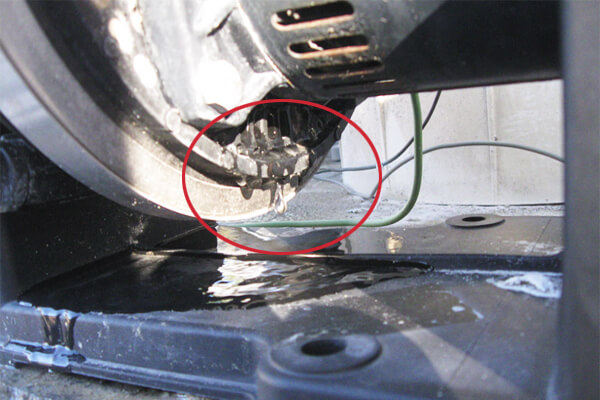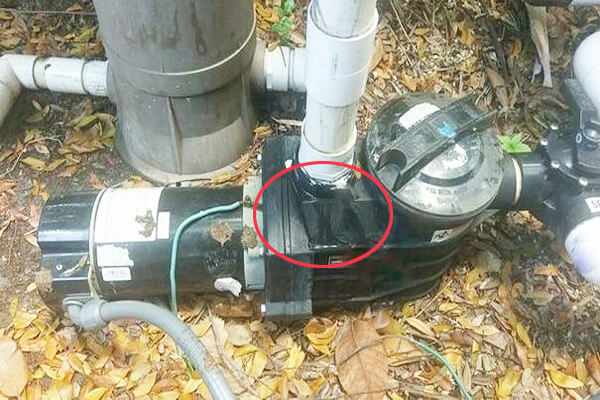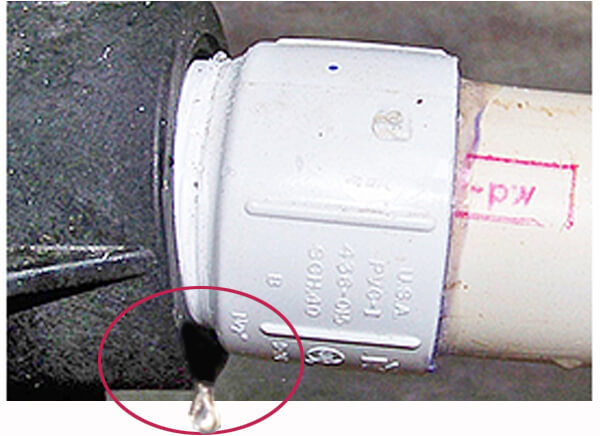How to Get Water Off Pool Cover Without Draining Pool

Even though many, many pool pumps leak water without incident, a leaking pool pump is cause for concern. And although rare, a slow drip or steady leak on a pool pump can rupture into a gusher, potentially draining thousands of gallons from your pool.
Leaky pool pumps can also cause erosion to the equipment pad, and salty water or chlorinated water can case corrosion to the pump motor or concrete pad beneath.
It's also just a waste of your heated and treated pool water, and for those areas where every drop of water is precious, even small pump or filter leaks should be fixed quickly.
Today we present the 5 most common pool pump leaks – how they happen and how you can fix them quickly, and be the household hero!
Leaking Pump Shaft Seal
Every pool pump has a mechanical shaft seal, which prevents water from leaking along the motor shaft, behind the impeller. When the shaft seal fails, it allows water to run down the backside of the seal plate, through the hole where the motor shaft slides through.

A leaking pump seal can be verified by getting down on all fours (with your reading glasses!) and looking closely to see water dripping down the backside of the seal plate, as shown below. Be careful that the leak is not actually a loose clamp band, or water dripping from the pump outlet fitting, running down and dripping off of the bottom.
To fix a leaking shaft seal, you first need to obtain the correct shaft seal for your particular pump. There are about half a dozen common seals used, see our pump seal cross reference sheet to be sure and select the correct seal. You can also use a Pump Go-Kit, which contains the seal and all o-rings and gaskets for a particular pool pump.
To replace a shaft seal, follow these steps:
- Unclamp or unbolt the motor half from the pump housing or volute, and slide it out.
- Remove the diffuser or impeller shroud to expose the impeller.
- Hold a wrench on the rear of the motor shaft to keep it from moving, while you unthread the impeller, CCW off of the other end of the motor shaft.
- Remove both halves of the shaft seal; the 'spring-half' from the impeller, and the 'donut-half' from the seal plate.
- Replace the new shaft seal in the same facing direction, as the one removed.
- Thread the impeller back onto the shaft tightly, replace the diffuser and wear ring, and bolt or clamp the pump seal plate and housing tightly together again.
Leaking Pump Housing
The pump housing, also called the volute, is the 'wet end' of your pump, including the hair & lint pot / strainer basket, and the impeller housing, can develop leaks in several areas. The housing can leak where it connects to the seal plate, or the 'dry end' of your pump, if the clamp or bolts are loose, or if the seal plate o-ring is no longer making a good seal.

Or, if your pump has experienced freeze damage, as shown above, you will need to replace the pump housing. Visit our pump parts department to find the correct volute to fit your pump. Replacement is fairly simple with just some light plumbing involved.
Pump drain plugs can be another source of a pump housing leak. If your drain plugs have missing o-rings, or were not installed with Teflon tape, drip-drip-drip when the pump is off, while sucking air in while the pump is running.
Leaking Outlet Fitting
As mentioned earlier, this may be mistaken for a shaft seal leak in some cases, as the water runs down the side of the pump and drips off the bottom. Look closely and you can see water leaking where the threaded PVC fitting screws into the outlet port.

To fix a leaking outlet fitting, you will need to replace the fitting. No amount of external putty or JB Weld, or any other sealant you find laying around will work. Trust me on this one. You can replace with a simple MTA fitting and a coupling, as has been done before on this pump shown above, or you can use a pump union with o-ring for a better seal.
The cause of this problem is often overheating and shrinking of the PVC fitting threads. To prevent occurrence, use Schedule 80 nipple, or a CPVC pump union which have a grey color and are temperature resistant.
Leaking Inlet Fitting
Located on the inlet side of the pump where water enters, a shrunken or loose threaded fitting here will draw air in while the pump is running, and may leak water when the pump is off, especially when the pump is located below water level. 
The reason that the pipe is tilted in the image above is because the threads have melted and shrunk from overheating, allowing it to leak air and water. Like the outlet fitting leak, the best solution is to replace the fitting, using a pump union or CPVC fittings instead of Sch 40 PVC.
You can also make a fairly good, almost permanent repair using Pool Putty or Silicone Sealant, if the fitting is not overly loose. While the pump is running, apply a heavy bead of Pool Putty or Silicone, so that it will be sucked into the void. Keep the pump running for 24 hours to allow it to harden in place.
Leaking Pump Lid
Like the other 'suction-side' leak listed above, a leaking pump lid will leak water only when the pump is off or not running. This can make this pump leak hard-to-find, if you are only looking for it when the pump is running. Pump lids can crack in some cases, requiring repair or replacement.

leaking pump lid on a DynaGlas pump
Pump lids need to be very tight, and pump lid o-rings needs to be lubricated. A dry o-ring or a loose pump lid will almost always dribble a bit when the pump shuts off. Use a good quality Teflon based pool lubricant like Magic Lube, and keep the pump lid very tight.
Many pump lid covers, like the one shown in the picture above, have raised edges or notches that allow you to insert a 2×4 piece of wood, or a thick piece of steel, for use in loosening an overly tight lid – or for tightening the lid, if that has been difficult for you.
There you have it – 5 of the most common pool pump leaks, along with their cause and remedy. Now go out there and get it fixed – and if you need the supplies or parts to do it – we're here for you!
Happy Leak Chasin'!

Davy Merino
In The Swim Blog Editor




 (7 votes, average: 3.43 out of 5)
(7 votes, average: 3.43 out of 5)
![]() Loading...
Loading...
How to Get Water Off Pool Cover Without Draining Pool
Source: https://blog.intheswim.com/leaking-pool-pump/
0 Response to "How to Get Water Off Pool Cover Without Draining Pool"
Post a Comment